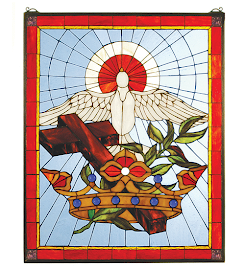
Solomon had a reputation for being a very wise man with many resources. His reputation was well-known throughout the world since he gathered materials from all over for the construction of both the temple and his palace. The riches he held was greater than any king in the nation of Israel. And there was never a king afterwards who would be able to boast of the great wealth of Solomon.
I Kings 10 announces the arrival of the Queen of Sheba to the palace. She arrived in great splendor with a large group of attendants. The Queen had heard of Solomon's wealth and wanted to see for herself if what she had heard was true. As part of her gift to Solomon she brought many precious stones along with gold and silver. No one knows exactly what stones were brought but the image of stones on a surface in a glistening array of colors comes to my mind.
One other important part of this story is the Queen's reaction to Solomon and his prosperity. It is interesting to note that when she saw the magnificence of Solomon's court, she gave praise to the Lord who had provided all the blessings to Solomon. She stated “Blessed be the Lord your God”.

















